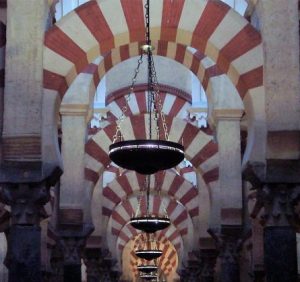
“I am from the partisans of Ḥadīth, and they are the best party. I hope to reach a hundred, having already passed the age of ninety.”
– Abū Ṭāhir al-Silafī (d. 576 AH)
The epithet ruḥla is an interesting designation coined for someone who is considered a destination for academic travel. At the turn of the 8th century AH, when news spread that the Damascene Abū al-ʿAbbās al-Ḥajjār (d. 730 AH) had attended an audition of Ṣaḥīḥ al-Bukhāri under al-Ḥusayn al-Zabīdī (d. 631 AH) as a child, he quickly rose through the ranks of stardom: no longer an ordinary stonemason, he became one of the most highly sought-after transmitters of Ḥadīth in the Mamluk realm. The fascination of Ḥadīth scholarship with elevated chains for over a millennium is encapsulated in Yaḥyā b. Maʿīn’s (d. 233 AH) final wish: “an empty home and an elevated chain (bayt khālī wa sanad ʿālī).”
Among the living legends of our time is Shaykh ʿAbd al-Raḥmān al-Kattānī, who is celebrated for his exceptionally elevated chains of transmission for Ḥadīth. He is more widely recognized as the last surviving son of arguably the most prolific Ḥadīth transmitter of the twentieth century: ʿAbd al-Ḥayy al-Kattānī (d. 1962). I had the opportunity to visit Shaykh ʿAbd al-Raḥmān at his home in Fez, Morocco alongside some students. Despite his deteriorating health, he was gracious enough to let us recite the opening ḥadīth of Ṣaḥīḥ al-Bukhārī and other narrations to him. He then penned an authorization (ijāza) for us.

ʿAbd al-Raḥmān al-Kattānī was born in Ṣafar 1338 AH/November 1919 CE; he just passed his hundredth birthday last month.[efn_note] Ziyād Tukla, Nayl al-Amānī, p. 74. For more information on his biography and a detailed list of his teachers, see Shaykh Ziyād Tuklah’s treatise Nayl al-Amānī bi-Fihrisat Musnid al-ʿAṣr ʿAbd al-Raḥmān b. ʿAbd al-Ḥayy al-Kattānī.[/efn_note] His father was his most formative mentor. He read/heard Ṣaḥīḥ al-Bukhārī to/from him roughly six times, Ṣaḥīḥ Muslim, al-Muwaṭṭaʾ, Alfiyyat al-ʿIrāqī, among other works. He also heard Ḥadīth from his uncle Muḥammad b. Jaʿfar al-Kattānī (d. 1927). He studied Mālikī law, theology, and other subjects at the prestigious University of al-Qarawiyyīn. Throughout his extensive travels, his father ʿAbd al-Ḥayy made it a point to request preeminent scholars of his time to grant him and his children authorization in Ḥadīth. Consequently, Shaykh ʿAbd al-Raḥmān received general authorization from a number of leading scholars, such as Aḥmad Riza Barelwī (d. 1921), Ḥassūna al-Nawāwī (d. 1925),[efn_note] Ḥassūna al-Nawāwī, the Grand Shaykh of Azhar, led a sixteen-scholar committee in reviewing the famous Sulṭāniyya edition of the Ṣaḥīḥ. See Aḥmad Shākir, al-Naqd, pp. 11-12.[/efn_note] Abū al-Khayr ʿĀbidīn (d. 1925), Yūsuf al-Nabahānī (d. 1932), Badr al-Dīn al-Ḥasanī (d. 1935), and Muḥammad Bakhīt al-Muṭīʿī (d. 1935).
He narrates Ṣaḥīḥ al-Bukhārī via eighteen links from the author, which is currently the shortest reliable chain of transmission of the Ṣaḥīḥ through unbroken audition.[10] One of his chains of transmission is as follows: ʿAbd al-Raḥmān al-Kattānī, from (1) ʿAbd al-Ḥayy al-Kattānī, from (2) Abū al-Naṣr al-Khaṭīb, Muḥammad Saʿīd al-Ḥabbāl, and ʿAbd Allāh al-Rikābī, from (3) ʿAbd al-Raḥmān al-Kuzbarī, from (4) Muḥammad al-Kuzbarī, from (5) ʿAlī al-Kuzbarī, from (6) Abū al-ʿIzz al-ʿAjamī, from (7) ʿAlī al-Shabrāmallisī, from (8) Aḥmad al-Subkī, from (9) Najm al-Dīn al-Ghayṭī, from (10) Zakariyyāʾ al-Anṣarī, from (11) Ibrāhīm b. Ṣadaqa al-Ḥanbalī, from (12) ʿAbd al-Raḥīm Ibn Razīn, from (13) Abū al-ʿAbbās al-Ḥajjār and Sitt al-Wuzarāʾ, from (14) al-Ḥusayn al-Zabīdī, from (15) Abū al-Waqt al-Sijazī, from (16) Abū al-Ḥasan al-Dāwūdī, from (17) Abū Muḥammad al-Sarakhsī, from (18) Muḥammad b. Yūsuf al-Firabrī, from Imām al-Bukhārī.
During one of his pilgrimage travels, the late Shaykh Yūnus Jawnpūrī (d. 2017) got wind of Shaykh ʿAbd al-Raḥmān’s presence during that pilgrimage. With the help of his students, Shaykh Yūnus undertook an arduous journey to obtain authorization of Ḥadīth from him. He would later boast that he met a student of Muḥammad b. Jaʿfar al-Kattānī, the author of al-Risāla al-Mustaṭrafa, and obtained authorization from him.
Given how active and engaging of a host he was—he actually sang poetry with us—he seemed much healthier than people his age. His state is reminiscent of Sufyān b. ʿUyayna’s (d. 198 AH) observation that anyone who pursues Ḥadīth will have a glow on his face,[efn_note] Al-Khaṭīb, Sharaf Aṣḥāb al-Ḥadīth, no. 28. [13] Due to his relatively poor health and other factors, getting an opportunity to recite Ḥadīth to him may not be as feasible as one would wish. Shaykh Yūnus once aptly observed, “Scholars maintained that Ḥadīth audition (samāʿ) was a form of sustenance (rizq).” We pray that Allāh grants him a long and healthy life and makes him a source of benefit for one and all.
[efn_note] Al-Silafī’s wish came true, and he passed a hundred years of age. Until his final moments, he would listen to Ḥadīth and point out subtle errors in the reading of students. ee al-Dhahabī, Siyar Aʿlam al-Nubalāʿ, vol. 21, p. 7; Abū Ghudda, Ṣafaḥāt min Ṣabr al-ʿUlamāʾ, p. 94. [efn_note] On ʿAbd al-Ḥayy al-Kattānī, see Davidson, Carrying on the Tradition, pp. 279-286.[/efn_note] [efn_note] Tukla, Nayl al-Amānī, pp. 85-109.[/efn_note] [efn_note] Tukla, Nayl al-Amānī, pp. 55, 117.[/efn_note] [efn_note] Tukla, introduction to al-Farāʾid, p. 10.[/efn_note] [/efn_note] as evidenced by the Prophet’s (ṣ) supplication, “May Allāh brighten the face of the one who hears my words and preserves them until he transmits them to others exactly as he heard them.”[efn_note] Abū Dāwūd, al-Sunan, no. 3660.[/efn_note] [efn_note] Garrett Davidson, Carrying on the Tradition: An Intellectual and Social History of Post-Canonical Ḥadīth Transmission, pp. 63-65.[/efn_note][
efn_note] Ibn al-Ṣalāḥ, Maʿrifat Anwāʿ ʿIlm al-Ḥadīth, p. 256.[/efn_note]
[efn_note]Al-Zabīdī, Tāj al-ʿArūs, vol. 29, p. 60; Muṣṭafā al-Khaṭīb, Muʿjam al-Muṣtalaḥāt wa al-Alqāb al-Tārīkhiyya, p. 207. [/efn_note] In the 4th century AH, al-Maḥbūbī (d. 346 AH), for instance, was deemed the sole destination for transmitting Jāmiʿ al-Tirmidhī. [efn_note] Al-Dhahabī, Siyar Aʿlam al-Nubalāʿ, vol. 15, p. 537.[/efn_note] [efn_note]He mentioned this after lamenting his inability to meet with the renowned Meccan musnid Yāsīn al-Fādānī (d. 1990). See al-Nadwī, al-Farāʾid, p. 64. [/efn_note] [efn_note] This post should not be misunderstood as a call for seeking out ijāzāt without any grounding in knowledge. On the harms of certain trends of seeking out authorization that have recently gained traction, see ʿAwwāma, Maʿalim Irshādiyya, pp. 188-194.[/efn_note]

